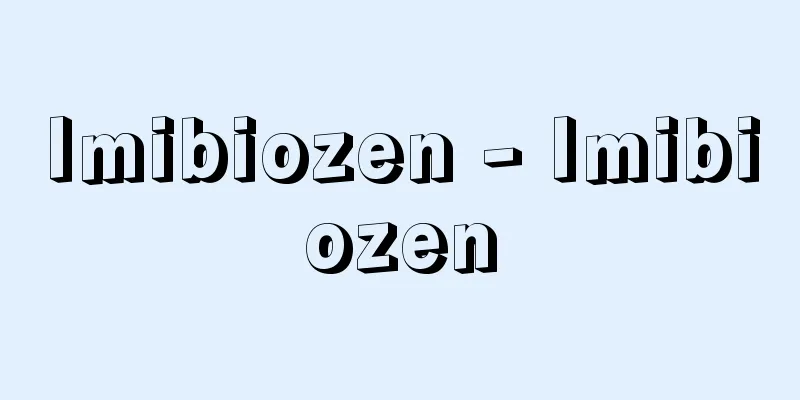Records of the Great Tang Dynasty in the Western Regions

|
A book written by the Tang Dynasty monk Xuanzang (Triple Treasure Priest) of China, who described what he saw and heard during his travels in India (629-645), and written by his disciple Benki. It is also called the "Daitō Seikiki" (Records of the Western Regions). It was written in 646. It consists of 12 volumes, and describes the geography, customs, products, language, traditions, and Buddhist circumstances of 138 countries in the order that Xuanzang traveled through them, and is also a valuable resource on politics and ethnicities. Volume 1 is devoted to Central Asia and Afghanistan, volumes 2 to 11 to various parts of India, and volume 12 again to Afghanistan and Central Asia. Some of the descriptions are hearsay about countries that Xuanzang did not visit, and care must be taken as this is not distinguished from knowledge that Xuanzang obtained directly. The study of this work can be referred to in the biography of Xuanzang, edited by Hui Liu. This work became an important guide for archaeological research by Western and Japanese scholars in India, Pakistan, Afghanistan, and Turkestan in the 19th century and after. It also had an impact on literature, and the horror novel Journey to the West was inspired by this work. European translations of this work include French translations by S. Julien (1857-58), English translations by S. Beal (1884), and English translations by T. Watters (1904-05). In Japan, there are research works such as Hori Kentoku's Commentary on the Western Region Records (1912), Adachi Kiroku's Study on the Records of the Western Regions of the Great Tang Dynasty (1942-43), as well as an annotated translation by Mizutani Shinjo. [Akira Sadakata] "The Great Tang Dynasty's Records of the Western Regions, translated by Masanari Mizutani (1971, Heibonsha)" ▽ "The Tripitaka of Xuanzang, by Shinji Maejima (Iwanami Shinsho)" [References] |Volume 1: Translated by Xuanzang, compiled by Benji, published during the Southern Song Dynasty, held at the National Diet Library "Records of the Great Tang Dynasty in the Western Regions" Volume 3 of the Horyu-ji Temple Edition, edited by Eiryu, commentary by Hikosaku, 1126 (Tenji 3), copy in the possession of the National Diet Library "> "The Biography of Tripitaka Monk from Daiji'en Temple" Source: Shogakukan Encyclopedia Nipponica About Encyclopedia Nipponica Information | Legend |
|
中国、唐の高僧玄奘(げんじょう)(三蔵(さんぞう)法師)がインド旅行(629~645)中の見聞を語ったものを、弟子の弁機(べんき)が筆録した書物。「だいとうせいいきき」ともいう。『西域記』と略称する。646年作。12巻からなり、玄奘の歩いた順に、138か国にわたって、地理、風俗、産物、言語、伝承、仏教事情が述べられており、政治や民族についても貴重な資料となっている。第1巻は中央アジアとアフガニスタン、第2巻から第11巻までがインド各地、第12巻がふたたびアフガニスタンと中央アジアにあてられている。記述のなかには玄奘が直接には赴かなかった国についての伝聞もあり、これが玄奘の直接入手した知識と区別されていないので注意を要する。本書の研究には慧立(えりゅう)編『大慈恩寺(だいじおんじ)三蔵法師伝』(玄奘の伝記)が参考になる。本書は、19世紀以降のインド、パキスタン、アフガニスタン、トルキスタンにおける欧米や日本の学者の考古学的調査において重要な指南書となった。また、文学の分野にも影響を及ぼし、怪奇小説『西遊記(さいゆうき)』は本書の刺激によって書かれた。本書のヨーロッパ語訳としては、ジュリアンS. Julienの仏訳(1857~58)、ビールS. Bealの英訳(1884)、ウォッターズT. Wattersの英訳(1904~05)がある。日本では、研究書として堀謙徳(けんとく)『解説西域記』(1912)、足立喜六(あだちきろく)『大唐西域記の研究』(1942~43)のほか、水谷真成(しんじょう)による注釈付き翻訳がある。 [定方 晟] 『水谷真成訳『中国古典文学大系22 大唐西域記』(1971・平凡社)』▽『前嶋信次著『玄奘三蔵』(岩波新書)』 [参照項目] |巻1 玄奘訳 弁機撰 南宋時代刊国立国会図書館所蔵"> 『大唐西域記』 法隆寺伝来本 巻3 慧立編、彦悰注釈 1126年(天治3)写国立国会図書館所蔵"> 『大慈恩寺三蔵法師伝』 出典 小学館 日本大百科全書(ニッポニカ)日本大百科全書(ニッポニカ)について 情報 | 凡例 |
>>: Daedong River - Daedong River
Recommend
Complete Collection of Daietsushiki - Daietsushikizensho
The official history of Vietnam, written in chron...
Petroleum resin
Naphtha is thermally cracked to obtain useful com...
Hughes, G.
…For example, in the UK, there is an amphitheater...
Medium-sized enterprise - Steady business enterprise
It is a coined term referring to companies that a...
Change - Kaieki
Originally, it meant taking away an official posi...
Plagiosauria
…They have relatively short bodies and tails, and...
Coastal trade (domestic) - Enganboueki
Cabotage is also called coastal trade or coastal ...
Vespertilio
…The superfamily Phyllostomatoidea includes the t...
Gunshochoyo
This is a 50-volume book compiled by Wei Zheng an...
Aminoacyl-tRNA synthetase (ARSase)
Also abbreviated as ARS. An enzyme that specifical...
Wetting agent
A surfactant that increases the ability of a solid...
Teleology - Teleology (English spelling)
This is the idea that the creation and change of ...
Endorphins
... It has become clear that there are various ph...
Shibuya Minoru
Film director. Real name Katayama Minoru. Born Ja...
Apostles' Creed - symbolum apostolicum (Latin)
From the very beginning, the Christian Church use...









